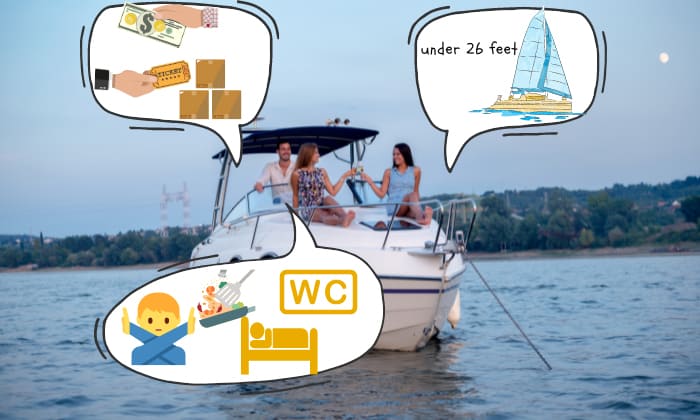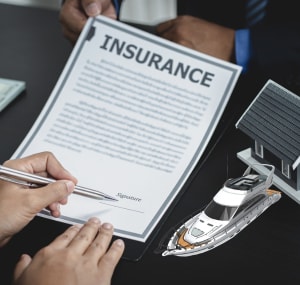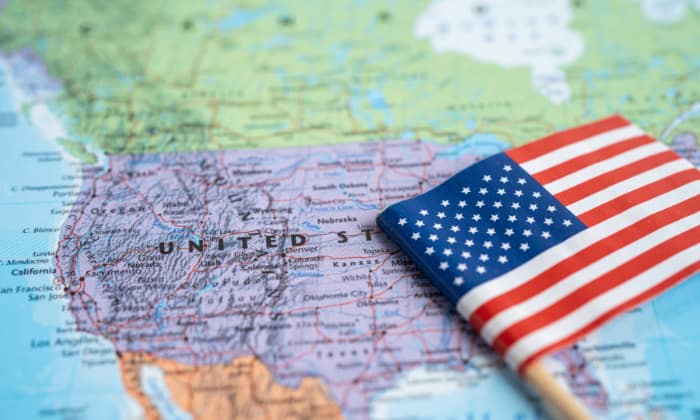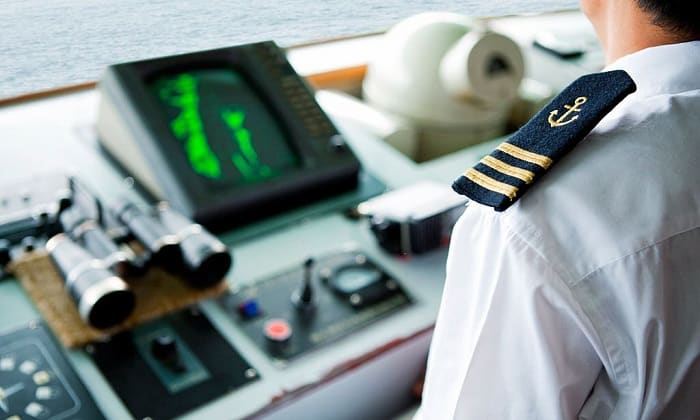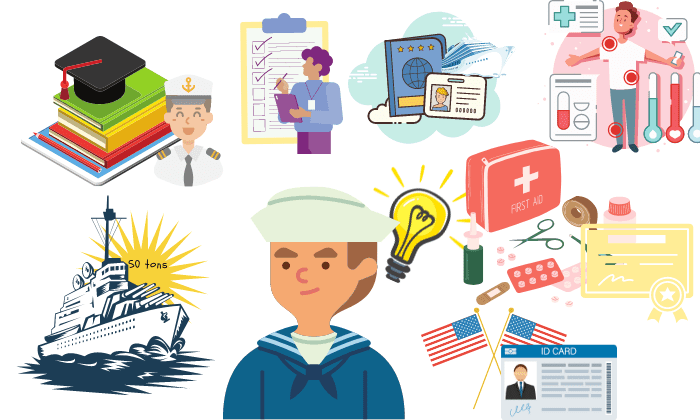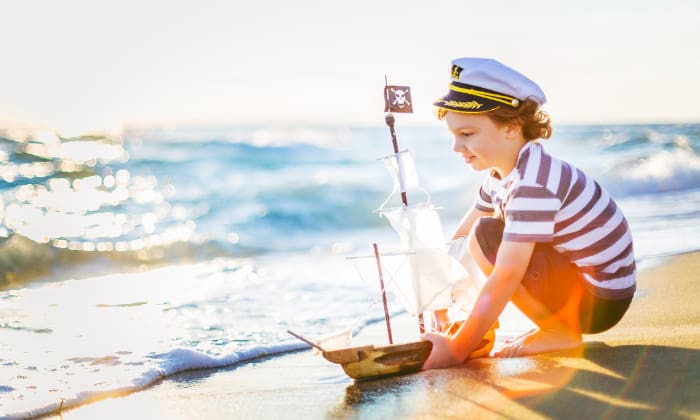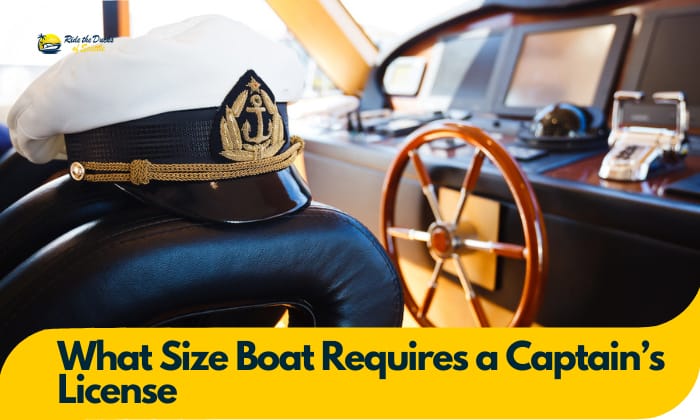
Many aspiring boat owners ask us, what size boat requires a captain’s license? Unfortunately, there are no clear-cut rules about minimum boat size needing a boater’s license because states have their respective laws.
Although how big of a boat matters, other factors can dictate a captain’s license requirement. Financial considerations, insurance purposes, and paying passengers are principal determinants.
We encourage you to keep reading if you think the issue is complicated.
Table of Contents
How Big Should My Boat Be Before I Need a Captain’s License?
We understand why many aspiring boaters wonder, “what length of boat requires a captain’s license?” They do not want to pilot their boat, not knowing they are legally prohibited from doing so. The penalties can be stiff if authorities catch them without the legal capacity to drive a watercraft.
According to the US Coast Guard, the boat you can pilot without a captain’s license should not require a crew and must not be used to carry or transport paying passengers or paid-for goods.
The boat should not have cooking facilities, toilets, sleeping quarters, and other amenities requiring inspection and certification by the US Coast Guard. Boat size becomes irrelevant if your vessel has any USCG-inspected components.
So, what size boat can I drive without a license? That would be any vessel less than 26 feet.
We emphasize that this exemption only applies to boats not used for “commercial purposes.” It does not matter if your vessel is less than ten feet or a hundred. You need a captain’s license if you use the boat to carry “paying” passengers or cargo in exchange for money.
When Do I Need a Captain’s License?
Three scenarios require you to have a captain’s license to operate any watercraft, regardless of size.
1. Operating a boat for an economic benefit
Vessel size becomes irrelevant if you use it for financial gain. For example, if somebody pays you to drive a cruise ship, you need a captain’s license.
Know that this rule does not apply when “passengers” or cargo owners “voluntarily share” the voyage’s operating expenses (i.e., supplies, fuel, beverages, food, etc.).
2. A “paying” passenger or passengers
Although this second point is similar to the first scenario, it focuses more on individuals “paying” directly or indirectly to the boat operator or any of the vessel’s crew.
For example, suppose the boat owner is a company CEO who wants to impress clients into forming a business partnership. Although the “clients” do not pay, the perceived “benefit” in such an activity (business partnership) becomes the “payment.”
Hence, the CEO must have a captain’s license to take guests on a leisure trip aboard the boat.
3. Insurance
Insurers evaluate risks associated with covering a client—in this case, the boat owner’s competence to operate a watercraft. Insurance companies also expect you to hold a valid captain’s license to finance or lease your watercraft.
Do States Have Varying Laws Regarding Captain’s Licenses?
Although the US Coast Guard Captain’s License requirements are explicit about the rules, states tend to observe laws that apply best to their jurisdictions.
For example, you can apply for either a near-coastal or inland captain’s license in Florida. The state also requires applicants to have at least 360 days of experience as a vessel crew member, with 90 days offshore.
In Texas, the minimum vessel experience for a master near coastal license is 720 days, with 360 days on the ocean or near coastal waters. The state also expects you to be at least 19. For inland permits, the requirement is 360 days, with at least 90 days of boating in the past three years.
The law in Michigan is different, requiring aspiring captains to secure a Department of Natural Resources-issued license for inland vessels.
Folks renting a watercraft in Maryland must show a temporary boating safety certificate, while one must be 18 years old to apply for a captain’s license in California.
The captain’s license requirements in NJ are almost similar to Florida requirements, although you must be 19 to earn a Master’s license.
What Types of Boat Captain Licenses Are Available?
You have two principal captain’s license types in the USA.
1. Six-pack
They call this captain’s license “six-pack” because the maximum number of passengers you can carry in your vessel is six. Examples are chartered vessels for tour cruising, scuba diving, fishing, and other recreational activities.
The requirements include the following.
- Minimum age = 18
- Minimum experience in water type applied for = 90 days
- Minimum crew experience = 360 days
2. Master
This captain’s license allows its legitimate holder to pilot a boat carrying more than six paying passengers. However, the license has limits as to the boat’s gross tonnage.
It is available in 25-, 50-, and 100-ton classifications, describing the maximum boat tonnage a Master’s license holder can captain. Examples are ferry boats, water taxis, harbor tour boats, and whale watching vessels.
The requirements are as follows.
- Minimum age = 19
- Minimum experience in water type applied for = 90 days within the last three years
- Minimum crew experience = varies depending on the license type applied for
Tips to Get Boat License
Here are a few tips to help you get a captain’s license.
- Work as a crew in any vessel for as long as possible and document the experience. Evidence is necessary to prove your experiences on the water.
- Gain experience from a vessel with the same gross tonnage you are applying for (i.e., 50 tons).
- Enroll in a boat captain’s course, either online or in-person. The competencies you will get will complement your real-world experience as a boat crew member.
- Check your state’s captain’s license requirements and prepare the documents before applying.
Examples of private boat captain license requirements include a medical exam report, drug screening report, CPR and first aid certification, transportation worker ID card, and proof of US citizenship.
Frequently Asked Questions
Do I need a captain’s license for my personal boat?
No, you do not need a USCG captain’s license for a personal boat, provided the watercraft does not reach 26 feet or more in length and requires no deckhand or crew.
The boat must also not have cooking facilities and sleeping quarters. It should also not have a toilet.
You also need a license to operate a personal boat if you accommodate a paying passenger.
What is the biggest captain’s license you can get?
The 100-ton Master License is the biggest captain’s license you can get. This proof of eligibility allows you to pilot 100 ton boats, including whale-watching vessels, harbor tour boats, water taxis, and ferry boats. You can also drive a yacht not exceeding 100 gross tons.
What is the largest boat without captain’s license?
The largest boat you can drive without a captain’s license is 25 feet. However, you will need a captain’s license if your vessel carries passengers or transports goods in exchange for monetary compensation, even if the boat is less than 26 feet.
Conclusion
It is moot and academic to ask what size boat requires a captain’s license because other factors can impact the equation. For instance, although 26 feet is the cut-off size, using a smaller vessel (i.e., 15 feet) for financial gain automatically requires a captain’s license.
And if you want an insurance company to protect your marine investment, you will also need a captain’s license. Hence, the <26-foot rule becomes irrelevant.

Ten years of enjoying countless trips on boats never made me love them any less! So I am here to put all those experiences into good use for other boaters who want to have a safe and fun trip with their friends and families.

